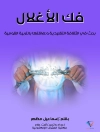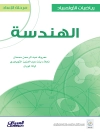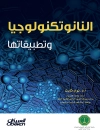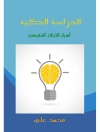This book addresses policy research on homophobic and transphobic bullying in schools. It covers quantitative and qualitative research into policy impacts for gay, lesbian, bisexual, transgender and intersex students. It draws on a large-scale Australian study of the impacts of different kinds of policy at the national, state, sector and school level. The study covers over 80 policies, interviews with key policy informants and survey data from 3, 134 GLBTIQ students. Since new guidelines were released by UNESCO, homophobic and transphobic bullying in schools has become a key area of interest around the world. There has been much pressure on educational leadership to engage with these issues since the UN released international human rights legislation on sexual orientation and gender identity that have implications for student rights. The book presents statistically significant correlations between specific types of state and school level education policies that explicitly named homophobia/ GLBTIQ student issues, and lowered incidence of homophobic bullying, lowered risk of suicide and self-harm for these students. It includes stories from policy makers on how the policies came to be (through lawsuits, ministerial inquiries and political activism), right through to the stories of students themselves and how they individually felt the impacts of policies or policy lacks. International contexts of homophobic and transphobic bullying are discussed, as well as recent transnational work in this field. The book considers the different types of collaborations that can lead to further policy development, the transferability of the research and some of the benefits and problems with transnational policy adoptions.
Innehållsförteckning
Acknowledgements.- Glossary.- Symbols & Abbreviations.- Chapter One: Why is Policy Presumed Powerful?- 1.1 Introduction.- 1.2 Why a Policy Book?- 1.2.1 A policy push.-1.2.2 Presuppositions around policy’s power.- 1.3 What this Book Covers.- 1.3.1 How the ‘GLBTIQ’ acronym is used.- 1.3.2 How ‘sexuality’ and ‘sexuality education’ are used.- 1.3.3 Why secondary schooling?- 1.4 What is Policy, Anyway?- 1.4.1 Policy and power.- 1.4.2 Policy as discursive.- 1.4.3 Discourse and power.- 1.5 Conclusion.- Chapter Two: GLBTIQ Students; What’s the Problem?- 2.1 Introduction.- 2.11 Research on GLBTIQ students.- 2.12 Research gaps.- 2.2 ‘GLBTIQ Student’ Constructions are Discursive.- 2.3 Discourse Exemplars.- 2.4 Orientation-based Sexuality Education Discourse Exemplar.- 2.4.1 Conservative.- 2.4.2 Liberal.- 2.4.3 Critical.- 2.4.4 Post-modern.- 2.5 Conclusion.- Chapter Three: Studying Policy Impacts.- 3.1 Introduction.- 3.2 Methodology: Critical Discourse Analysis.- 3.1.1 Adaptation of CDA.- 3.1.2 Post-modern approach to description stage.- 3.1.3 Both core and innovative techniques.- 3.3 Research procedures.- 3.3.1 Data sources and collection methods.- 3.3.2 Source One: policies – textual analysis.- 3.3.3 Source Two: key informant interviews.- 3.3.4 Source Three: survey data – quantitative and qualitative analysis.- 3.4 Data analysis.- 3.4.1 Leximancer analysis of policy documents.- 3.4.2 Fairclough’s 10 CDA questions.- 3.4.3 Visual CDA techniques.- 3.4.4 Fairclough’s analysis of discursive practices.- 3.5 Ethical considerations.- 3.6 Conclusion.- Chapter Four: How do Australian Policies Treat GLBTIQ Students?- 4.1 Introduction.- 4.2 Mapping the policy terrain – overview of the corpus.- 4.2.1 National policies: inclusion in principle.- 4.2.2 The policy states of the nation.- 4.2.3 Conclusions about policydiscourses.- 4.3 Constructions of GLBTIQ students in key policies.- 4.3.1 National: part of the general diversity.- 4.3.2 NSW: Protected victims, potential complainants.- 4.3.3 QLD: Interpretively included, or not needy enough.- 4.3.4 Victoria: DEECD: Protected needy ‘at risk’ victims.- 4.3.5 Conclusions about how constructions function.- 4.4 Conclusion.- Chapter Five: Which Policies Are Useful?- 5.1 Introduction.- 5.2 Australian GLBTIQ students.- 5.3 Usefulness of policies in enhancing school level policy protection.- 5.3.1 National.- 5.3.2 State level.- 5.4 Usefulness of policies in increasing the purchase of affirming discourses.- 5.4.1 National.- 5.4.2 State level.- 5.4.3 School level.- 5.5 Usefulness of policies in encouraging support features.- 5.5.1 National.- 5.5.2 State level.- 5.5.3 School level.- 5.6 Usefulness of policies in encouraging supportive school climates.- 5.6.1 National.- 5.6.2 State level.- 5.6.3 School level.- 5.7 Conclusion.- Chapter Six: Conclusions & Outcomes.- 6.1 Discussion of findings.- 6.1.1 Policy positions: paucity AND polyvalence.- 6.1.2 Policy’s uses and usefulness.- 6.1.3 Policy’s presumed powers.- 6.2 Conclusions.- 6.2.1 Preferable policy positions.- 6.2.2 Useful policies.- 6.2.3 Policies with enhanced powers.- 6.2.4 Limitations.- 6.3 Implications.- 6.3.1 For education bodies and policy makers.- 6.3.2 For policy advocates and activists.- 6.3.3 For school staff.- 6.3.4 For teacher educators.- 6.3.5 For students.- 6.3.6 For academics.- 6.4 Outcomes.- 6.4.1 Brief overview of dissemination.- 6.4.2 International and national outcomes.- 6.4.3 State-specific outcomes.- 6.5 Conclusion.












